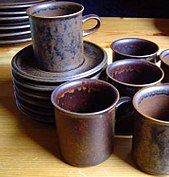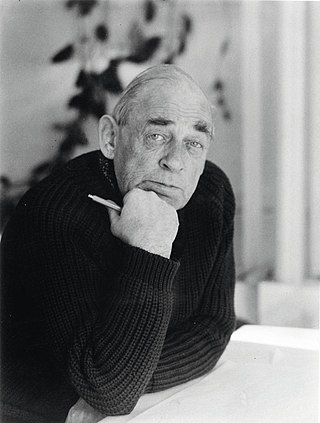
Hugo Alvar Henrik Aalto was a Finnish architect and designer. His work includes architecture, furniture, textiles and glassware, as well as sculptures and paintings. He never regarded himself as an artist, seeing painting and sculpture as "branches of the tree whose trunk is architecture." Aalto's early career ran in parallel with the rapid economic growth and industrialization of Finland during the first half of the 20th century. Many of his clients were industrialists, among them the Ahlström-Gullichsen family, who became his patrons. The span of his career, from the 1920s to the 1970s, is reflected in the styles of his work, ranging from Nordic Classicism of the early work, to a rational International Style Modernism during the 1930s to a more organic modernist style from the 1940s onwards.

In architecture, functionalism is the principle that buildings should be designed based solely on their purpose and function. An international functionalist architecture movement emerged in the wake of World War I, as part of the wave of Modernism. Its ideas were largely inspired by a desire to build a new and better world for the people, as broadly and strongly expressed by the social and political movements of Europe after the extremely devastating world war. In this respect, functionalist architecture is often linked with the ideas of socialism and modern humanism.

Marimekko Oyj is a Finnish textiles, clothing, and home furnishings company founded by Viljo and Armi Ratia in Helsinki in 1951. Marimekko made important contributions to fashion in the 1960s. It is particularly noted for its brightly colored printed fabrics and simple styles, used both in women's garments and in home furnishings.

Aalto University School of Arts, Design and Architecture; Finnish: Aalto-yliopiston taiteiden ja suunnittelun korkeakoulu; Swedish: Aalto-universitetets högskola för konst, design och arkitektur), was formed of two separate schools: the faculty of architecture and the University of Art and Design Helsinki. TaiK, founded in 1871, was the largest art university in the Nordic countries. The university awards the following academic degrees: Bachelor of Science in Technology, Architect, Bachelor of Arts, Master of Arts, and Doctor of Arts.

Yrjö Kalervo Sotamaa is a Finnish designer and design strategist. Sotamaa is Professor Emeritus of Design Innovation in the Aalto University School of Art, Design and Architecture and President Emeritus of the University of Art and Design Helsinki (TAIK). He served as the president of TAIK from 1986 until 2008. He earned his MA in Interior Architecture and Furniture Design from TAIK, where he studied with Kaj Franck and Antti Nurmesniemi.

Aino Maria Marsio-Aalto was a Finnish architect and a pioneer of Scandinavian design. She is known as the design partner of architect Alvar Aalto, with whom she worked for 25 years, and as a co-founder with him, Maire Gullichsen, and Nils-Gustav Hahl of the design company Artek, collaborating on many its most well-known designs. As Artek's first artistic director, her creative output spanned textiles, lamps, glassware, and buildings. It has been discovered that it was Aino who completed the first work commissioned through Artek which was the Viipuri Library in 1935. Her work is in the permanent collection of the Museum of Modern Art (MoMA) in New York, and MoMA has included her work in nine exhibitions, the first of which was Aalto: Architecture and Furniture in 1938. Other major exhibitions were at the Barbican Art Gallery in London and Chelsea Space in London. Aino Aalto has been exhibited with Pablo Picasso.

Scandinavian Design, Inc. was a furniture retailer located in New York City. It was founded in 1955 by Hans Lindblom and his wife Celia, who sold the work of their friend, Swedish designer Bruno Mathsson, under the name Bruno Mathsson Furniture. During the years more and more designs were added, and the store became Scandinavian Design, Inc., representing many designers and manufacturers from Denmark, Finland and Sweden. Original designers that were at times showcased by Scandinavian Design included Alvar Aalto, Arne Jacobsen, Poul Kjaerholm, Borge Mogensen and Hans J. Wegner.

Vuokko Hillevi Lilian Eskolin-Nurmesniemi is a Finnish textile designer. She is best known for her work as one of the two leading designers of the Marimekko company. Her signature striped Jokapoika shirt helped to make the company's name.

Iittala, founded as a glassworks in 1881, is a Finnish design brand specialising in design objects, tableware and cookware. Iittala's official i-logo was designed by Timo Sarpaneva in 1956.

Maija Sofia Isola was a Finnish designer of printed textiles, and the creator of over 500 patterns, including Unikko ("Poppy"). The bold, colourful prints she created as the head designer of Marimekko made the Finnish company famous in the 1960s. She also had a successful career as a visual artist.
Undisputedly the most famous textile designer... at Marimekko

Claesson Koivisto Rune is a Swedish architectural partnership, founded in 1995 by Mårten Claesson, Eero Koivisto and Ola Rune. It started as an architectural firm, but has since become a multi-disciplinary office with an equal emphasis on both architecture and design.

Danish modern is a style of minimalist furniture and housewares from Denmark associated with the Danish design movement. In the 1920s, Kaare Klint embraced the principles of Bauhaus modernism in furniture design, creating clean, pure lines based on an understanding of classical furniture craftsmanship coupled with careful research into materials, proportions, and the requirements of the human body.

Kvadrat is a Danish textile company that produces and supplies textiles and textile-related products to architects, designers and private consumers in Europe and worldwide. Kvadrat was established in Denmark in 1968 with deep roots in Scandinavia's design tradition.

Grete Prytz Kittelsen, was a Norwegian goldsmith, enamel artist, and designer. She is one of the most well-known Norwegians in the Scandinavian Design movement, and has been referred to as the "Queen of Scandinavian Design". Through her work she contributed to internationalisation, innovation and scientific research. She was one of the few Norwegian practitioners who shaped the Scandinavian design style in the post-war era and is the periods’ most renowned Norwegian practitioner. Kittelsen's aim was to make beautiful and user-friendly everyday objects available for everyone. She had a vast and varied production. With her enamelled objects and jewellery she has been a pioneer in design in the post-war era and a model for the next generation of designers. Today her pieces constitute design icons and are sought-after collectables.
Nordic art is the art made in the Nordic countries: Denmark, Faroe Islands, Finland, Iceland, Norway, Sweden, and associated territories. Scandinavian art refers to a subset of Nordic art and is art specific for the Scandinavian countries Denmark, Sweden and Norway.
Scandinavian Academy of Industrial Engineering and Management (ScAIEM), founded in 2012, is an academic association with members from Iceland, Norway, Denmark, Sweden, and Finland that facilitate collaboration, knowledge sharing and dissemination of best practices between universities within the industrial engineering and management (IEM) field.
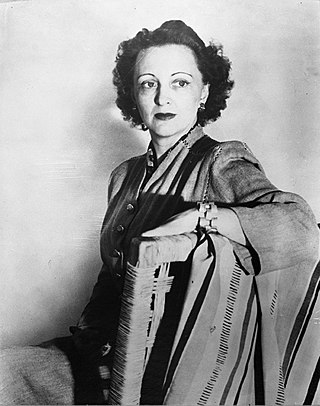
Eva-Lisa "Pipsan" Saarinen Swanson (March 31, 1905 – October 23, 1979) was a Finnish-American industrial, interior, and textile designer based in Michigan. She was known for her contemporary furniture, textile, and product designs.
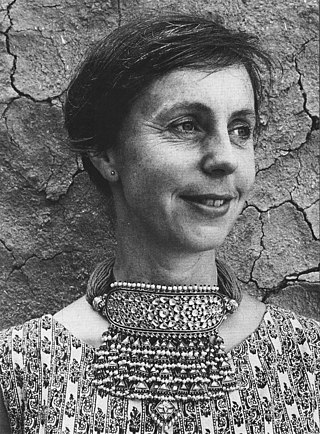
Saara Elisabet Hopea-Untracht was a Finnish designer whose work included glassware and jewellery.
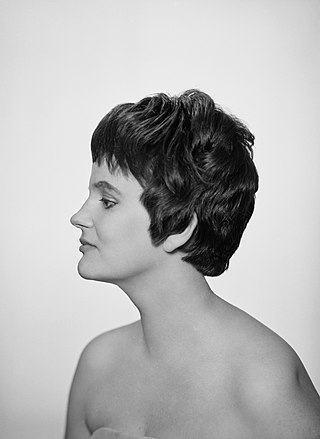
Nanny Elisabet Still-McKinney, best known professionally by her maiden name Nanny Still, was a Finnish industrial designer and glass artist, and one of the country's most influential designers of the post-war period.



